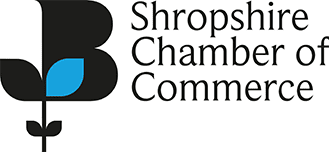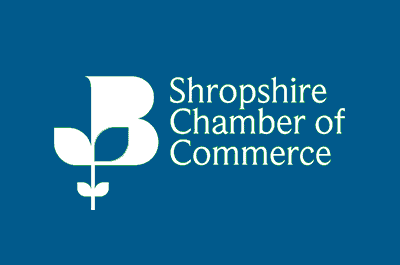BCC's Head of Research, David Bharier talks about the impacts of Coronavirus on UK businesses and the results from the first round of the BCC's Coronavirus Business Impacts Tracker.
On 23 March, as the UK entered into a lockdown to contain the Coronavirus pandemic, businesses across the UK fell into an unprecedented crisis. The need for real-time economic information had never been greater.
To ensure our organisation had the best possible evidence base on which to advise UK Government in their response to the crisis, and support our member businesses, the British Chambers of Commerce quickly mobilised to understand the immediate impacts on UK businesses and on 25 March, we launched a 'Coronavirus Business Impacts Tracker'.
The Tracker is a weekly business survey that seeks to understand the change in economic conditions as well as business awareness and usage of the various support schemes announced following the lockdown.
What makes the BCC's Tracker so important?
This was the first major survey assessing the business impacts of Coronavirus, and our proprietary survey platform gave us the flexibility to move at the rapid pace in which the economy shifted. Crucially, the respondents to the survey – Chamber of Commerce members – are reflective of the wider business community. Around 95 per cent of respondents to our surveys are SME; 75 per cent are in the service sector, and 25 per cent are manufacturers. They range from sole traders and consultants to multinational corporations and major manufacturers and cover the length and breadth of the UK.
Each week, the data we collected from businesses using the Tracker was fed directly into the heart of government and the Bank of England and we spent a significant amount of time supporting policymakers in their decision making. The data from our Tracker was instrumental in shaping the government's economic response to Coronavirus, particularly in understanding the business use and effectiveness of the various government support packages.
Indeed, colleagues across the government and the Bank of England have consistently stated how valuable the Tracker has been in shaping assumptions about the wider economy, and it has been featured in many reports, such as the OBR’s Coronavirus Reference Scenario.
What has been the immediate impact on UK businesses?
Here are selected insights from the Tracker:
1.The initial weeks of the lockdown saw enormous falls in revenue for UK firms
Throughout the course of the Tracker, we measured the proportion of businesses reporting a change in revenue. The first weeks of the Tracker showed that the vast majority of firms saw decreases - mostly significant decreases - in revenue from both UK and overseas customers.
Businesses trading internationally were some of the first to feel the impacts of the pandemic. Indeed, even before the lockdown, our Quarterly Economic Survey for Q1 2020 had already begun to detect this, with many internationally active firms telling us as early as February that coronavirus had caused cancellations of major international trade shows and the closure of production sites, particularly in China.
This trend levelled off in later weeks, with an increasing percentage of firms reporting no change in revenue. Rather than indicating a recovery however, this shows that the economic picture had stabilised but at a much lower level.
2. The furlough scheme is the most widely accessed form of government support to businesses
In the Tracker, we wanted to understand the effects of the crisis on the labour market. Just as we saw with the major drop off in revenue from customers, firms also reported declines in the number of hours worked by staff as economic activity suddenly stopped. Government support for employees, specifically though the Job Retention Scheme (furlough), has proven to be the most widely used and effective, and is arguably the thread on which the labour market currently hangs.
We found that of all the schemes, the Job Retention Scheme is by far and away the most relied upon form of support with almost three quarters of employers furloughing staff. Around 15 per cent of firms had in fact furloughed their entire workforce.
Some sectors are more reliant on the scheme than others. For example, business-to-consumer (B2C) firms - including retailers, hospitality/catering - are more likely to have furloughed staff than business-to-business (B2B) firms such as lawyers and accountants. B2C firms are also more likely to be furloughing larger portions of their workforce.
The percentage of employees furloughed by firms
The scheme has also proven effective in providing funding to businesses making use of it. Our Tracker for May 13-15 found that, of those who had furloughed staff, 85 per cent had successfully submitted a claim and received payment from HMRC, providing a real life-line to both employers and employees.
3. Many SMEs are concerned about taking on debt
A key pillar of government support to businesses is government backed loans. These schemes include the Coronavirus Business Interruption Loan Scheme (CBILS) and the Bounce Bank Loan Scheme (BBLS).
While a key feature of CBILS is that businesses do not need to pay interest or fees on the loan for 12 months, our Tracker found relatively low levels of attempted usage in the weeks that we tested this. Less than one-fifth said they attempted to access the scheme. For those not attempting to access CBILS, almost half of firms said the main reason for this was simply that they ‘already had enough cash or funding’.
However, a key distinction emerges when we split the results by firms with more than three months of cash in reserve and those with less than three months. For firms with less than three months in cash, the top answer for not attempting to access CBILS is instead that they are concerned about not being able to pay the loan back.
After the BBLS was launched on 4 May, we quickly adapted our Tracker to understand its effectiveness.
Comparing the two loan schemes, we found that BBLS had both a slightly higher attempted usage rate and a far higher self-reported success rate than CBILS. The Tracker for May 13-15 found that 54 per cent of those firms that had attempted to access BBLS had been successful, while only nine per cent had not. The BBLS, along with the Job Retention Scheme, was a clear example of how streamlined business support can quickly get to the businesses that need it.
The lockdown in March was a major shock for many businesses, but the long-term effects are yet to be fully understood. Permanent damage to some sectors of the economy and prolonged weakness in consumer confidence could be the new normal. But by the same token, new sources of innovation and productivity could emerge as businesses respond to the new pressures and ways of working.
To understand both the challenges and opportunities for the UK economy, we will be relaunching the Coronavirus Business Impacts Tracker later in June, with a longer-term focus on the structural changes that businesses will be going through. By building on the data we collected between March and May, we will be able to develop an up-to-the-minute understanding of business conditions and inform our ground-breaking work on how to Restart, Rebuild and Renew the UK’s economy, which we are developing across our whole Chamber Network.
For more information about partnering with us on our Coronavirus Business Impacts Tracker, please contact












Latest News